Guía completa de baterías del grupo 42: especificaciones y usos sin mantenimiento
Si busca una fuente de energía compacta, eficiente y confiable, la batería 42 es la mejor opción para diversas aplicaciones automotrices e industriales. Ya sea que esté reemplazando la batería de su automóvil o equipando sistemas de energía de respaldo, comprender las baterías del Grupo 42 es crucial. Esta guía lo explorará todo, desde las dimensiones y especificaciones hasta las características que no requieren mantenimiento y sus usos en el mundo real. Profundicemos en el mundo de la tecnología de baterías 42 y le ayudaremos a tomar una decisión informada.
- ¿Qué es una batería del grupo 42?
- ¿Por qué elegir una batería 42 sin mantenimiento?
- Dimensiones y especificaciones físicas de 42 modelos de batería
- Aplicaciones de la Batería 42
- Comparación de la batería del grupo 42 con otros grupos de baterías
- Cómo elegir la batería 42 adecuada
- Cómo instalar una batería 42 de forma segura
- ¿Cuánto dura una batería del grupo 42?
- Consejos de mantenimiento para prolongar la vida útil de la batería de su 42
- Cómo almacenar correctamente una batería de 42
- Reciclaje y Responsabilidad Ambiental
¿Qué es una batería del grupo 42?
La batería del Grupo 42 , según la clasificación del Consejo Internacional de Baterías (BCI), es un tamaño de batería estandarizado, diseñado para una amplia gama de vehículos, en particular modelos europeos y algunos automóviles compactos estadounidenses. La designación "Grupo 42" se refiere específicamente a sus dimensiones físicas y la ubicación de los terminales.
Características clave de las baterías del grupo 42
Tamaño del grupo BCI : 42
Dimensiones : aproximadamente 9,37 x 6,75 x 6,88 pulgadas (largo x ancho x alto)
Voltaje : 12 V
Amperios de arranque en frío (CCA) : 350–650
Capacidad de reserva : 70–120 minutos
Mantenimiento : La mayoría de los modelos no necesitan mantenimiento.
Estas baterías son más conocidas por su equilibrio entre tamaño y potencia de salida, lo que las hace ideales para vehículos modernos con altas demandas de energía.
¿Por qué elegir una batería 42 sin mantenimiento?
Las baterías sin mantenimiento se han convertido en el estándar en el mundo automotriz actual, y la batería 42 no es la excepción. Estas baterías selladas de plomo-ácido están diseñadas para eliminar la necesidad de revisar los electrolitos y rellenar el agua, ofreciendo comodidad y confiabilidad.
Ventajas de las baterías 42 sin mantenimiento
Diseño sellado : evita fugas y derrames.
No requiere riego : ahorra tiempo y reduce las molestias de mantenimiento.
Mayor vida útil : la tecnología avanzada conduce a una degradación más lenta.
Rendimiento constante : ofrece una salida de voltaje constante
Ya sea que viaje a diario o sea un aventurero de fin de semana, una batería 42 que no requiere mantenimiento puede brindar un rendimiento confiable sin necesidad de atención constante.
>>Vea también Comprensión de las baterías BCI del grupo U1 y U1R para aplicaciones industriales
Dimensiones y especificaciones físicas de 42 modelos de batería
Comprender el tamaño físico de una batería de 42 V es fundamental para garantizar un ajuste adecuado en la bandeja de batería de su vehículo. Puede haber ligeras variaciones de tamaño entre fabricantes, pero el estándar generalmente se mantiene constante.
Dimensiones estándar
Longitud : 9,37 pulgadas (238 mm)
Ancho : 6,75 pulgadas (171 mm)
Altura : 6,88 pulgadas (175 mm)
Peso : 30 a 40 libras, dependiendo de la configuración de la placa interna
Tipos de terminales y orientación
Terminales de poste superior : tipo más común
Polaridad : Configuración estándar con positivo a la izquierda o a la derecha (varía según el fabricante)
Antes de comprar una batería de repuesto 42, verifique siempre las medidas de su batería actual y la orientación de los terminales para garantizar la compatibilidad.
Aplicaciones de la Batería 42
Las baterías del Grupo 42 se utilizan en una amplia variedad de aplicaciones gracias a su versátil tamaño y potencia. Son especialmente comunes en vehículos europeos, pero también son compatibles con numerosas marcas estadounidenses y asiáticas.
Aplicaciones automotrices
Volkswagen Jetta
BMW Serie 3
Chevrolet Cavalier
Ford Escort
Audi A4
Otras aplicaciones
Equipos eléctricos : pequeños generadores y lavadoras a presión
Uso marino : Baterías auxiliares en embarcaciones compactas
Almacenamiento de energía solar : para pequeñas instalaciones solares fuera de la red
Sistemas de energía de respaldo : para sistemas de alimentación ininterrumpida (UPS)
El rendimiento de la batería 42 en diversas condiciones de carga la hace ideal tanto para arranques en frío como para uso auxiliar sostenido.
Comparación de la batería del grupo 42 con otros grupos de baterías
Es importante comparar la batería 42 con otros grupos de baterías similares para determinar si es la opción correcta para sus necesidades específicas.
Grupo 42 vs Grupo 47
Tamaño : El grupo 47 es un poco más grande.
Capacidad : El grupo 47 normalmente tiene una mayor capacidad de reserva.
Ajuste : el grupo 42 se adapta mejor a compartimentos más pequeños.
Grupo 42 vs Grupo 35
Forma : El grupo 35 es más alto y es posible que no quepa en bandejas con poco espacio libre.
Amperios de arranque en frío : comparables en la mayoría de los casos
Precio : A menudo similar según la marca y la tecnología.
Cómo elegir la batería 42 adecuada
Seleccionar la batería 42 correcta implica más que solo verificar las dimensiones. También debe considerar la reputación de la marca, la garantía, el amperaje de arranque en frío y la capacidad de reserva.
Consideraciones clave de compra
Clasificación CCA : Elija un modelo con al menos 400 CCA para climas fríos
Reputación de marca : nombres confiables como Interstate, DieHard, Bosch
Cobertura de la garantía : Busque una garantía de reemplazo completa de al menos 2 a 3 años
Tipo de tecnología : AGM (Absorbed Glass Mat) vs. plomo-ácido inundado estándar
Las mejores marcas recomendadas
Interestatal MT-42
Bosch S4 42-400B
ACDelco 42PG
DieHard Gold 42
Estos modelos reciben constantemente altas calificaciones de los clientes y brindan un rendimiento confiable.
Cómo instalar una batería 42 de forma segura
La correcta instalación de una batería de 42 V es fundamental para el rendimiento y la seguridad del vehículo. Aquí tienes una guía paso a paso.
Herramientas necesarias
Guantes y gafas de seguridad
Juego de llaves
Limpiador de terminales de batería
Gel anticorrosión
Pasos de instalación
Apague el vehículo y retire la llave.
Desconecte primero el terminal negativo , seguido del positivo.
Retire la batería vieja , teniendo cuidado con las fugas de ácido.
Limpie la bandeja y los terminales de la batería
Coloque la batería nueva en la bandeja y asegúrela.
Conecte primero el terminal positivo y luego el negativo.
Arranque el vehículo y verifique los sistemas eléctricos.
Deseche siempre la batería vieja de forma adecuada en un centro de reciclaje certificado.
¿Cuánto dura una batería del grupo 42?
Una batería 42 de alta calidad generalmente dura entre 3 y 5 años , dependiendo del uso, el clima y las prácticas de mantenimiento.
Factores que afectan la esperanza de vida
Clima : El calor o el frío extremos pueden acortar la vida útil.
Frecuencia de uso : Los viajes cortos frecuentes reducen la vida útil de la batería.
Estado del sistema de carga : un alternador defectuoso puede destruir una batería en buen estado
Condiciones de almacenamiento : Los períodos prolongados de inactividad agotan la energía de la batería.
Señales de que necesita un reemplazo
Arranque lento del motor
Problemas eléctricos (luces tenues, falla de la radio)
Terminales corroídos
Luces de advertencia en el tablero
Si no está seguro, haga que prueben la batería en su tienda local de repuestos de automóviles; la mayoría ofrece este servicio gratis.
>>Vea también Cableado de seis baterías de 12 V para construir un sistema de energía de 36 V
Consejos de mantenimiento para prolongar la vida útil de la batería de su 42
Si bien la mayoría de los modelos de batería 42 no requieren mantenimiento, existen varias medidas que puedes tomar para prolongar su vida útil.
Mejores prácticas de mantenimiento
Pruebas periódicas : verifique los niveles de voltaje cada 3 a 6 meses
Terminales limpios : elimine la acumulación de corrosión con una solución de bicarbonato de sodio
Montaje seguro : evite daños por vibración apretando las abrazaderas
Evite la descarga completa : descargar la batería por completo puede reducir la capacidad
Limite el uso de accesorios : apague las luces y los dispositivos electrónicos cuando el motor esté apagado
Siguiendo estos consejos su batería podrá funcionar confiablemente durante años.
Cómo almacenar correctamente una batería de 42
Un almacenamiento adecuado es esencial si planea mantener una batería 42 en reserva o durante paradas estacionales del equipo.
Pautas de almacenamiento
Cargar completamente antes de guardarlo
Mantener en un lugar fresco y seco.
Desconectarse de cualquier carga
Verifique el voltaje mensualmente
Utilice un mantenedor de batería para el almacenamiento a largo plazo
El almacenamiento inadecuado puede provocar sulfatación, lo que reduce gravemente la vida útil y el rendimiento de la batería.
Reciclaje y Responsabilidad Ambiental
Desechar una batería 42 correctamente no solo es obligatorio por ley, sino que es lo correcto. Las baterías de plomo-ácido contienen materiales peligrosos que pueden dañar el medio ambiente si se desechan incorrectamente.
Cómo reciclar
Llévelo a tiendas de repuestos para automóviles que ofrezcan reciclaje.
Entrega en centros de reciclaje municipales certificados
Nunca deseche las baterías en la basura doméstica.
Algunos minoristas ofrecen crédito por reciclar su batería vieja al comprar una nueva.
Preguntas frecuentes (FAQ)
¿Puedo reemplazar una batería del grupo 42 por una de tamaño diferente?
Sí, pero solo si el repuesto cumple o supera las especificaciones eléctricas y encaja en la bandeja de la batería. Consulte siempre el manual del usuario o consulte a un profesional.
¿Merecen la pena las baterías AGM 42?
Por supuesto. Las baterías AGM son más resistentes a las vibraciones, tienen una vida útil más larga y se cargan con mayor eficiencia. Son ideales para vehículos con sistema start-stop y climas extremos.
¿Cómo sé si la batería de mi 42 se está agotando?
Las señales comunes incluyen arranque lento, luces tenues y arranques frecuentes con cables. Si su batería tiene más de 3 años y presenta estos síntomas, es hora de revisarla o reemplazarla.
Reflexiones finales sobre la batería del Grupo 42
La batería 42 sigue siendo una opción esencial para conductores y profesionales que necesitan energía confiable en un formato compacto. Desde su diseño sin mantenimiento hasta su versatilidad y rendimiento confiable, es fácil entender por qué este grupo de baterías es tan popular. Ya sea que busque un vehículo de uso diario, una fuente de energía de respaldo o equipo marino, la batería 42 ofrece un excelente equilibrio entre costo, rendimiento y durabilidad.
Al comprender sus necesidades de energía, comparar especificaciones y elegir marcas reconocidas, garantizará años de uso sin preocupaciones. No descuide el almacenamiento y el cuidado: estos pasos pueden prolongar drásticamente la vida útil de su batería. Ahora que comprende completamente la batería 42 , está preparado para tomar una decisión inteligente e informada.

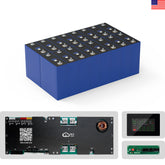

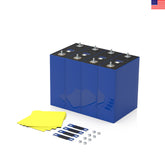

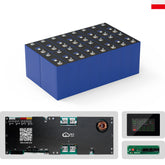

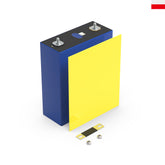

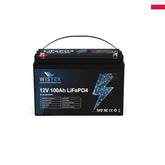
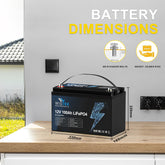
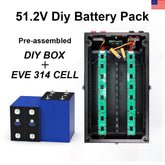

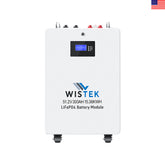
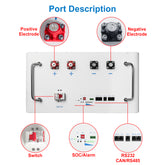
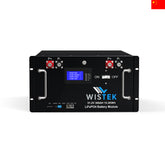
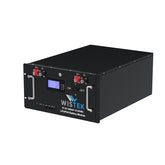


Leave a comment
All blog comments are checked prior to publishing